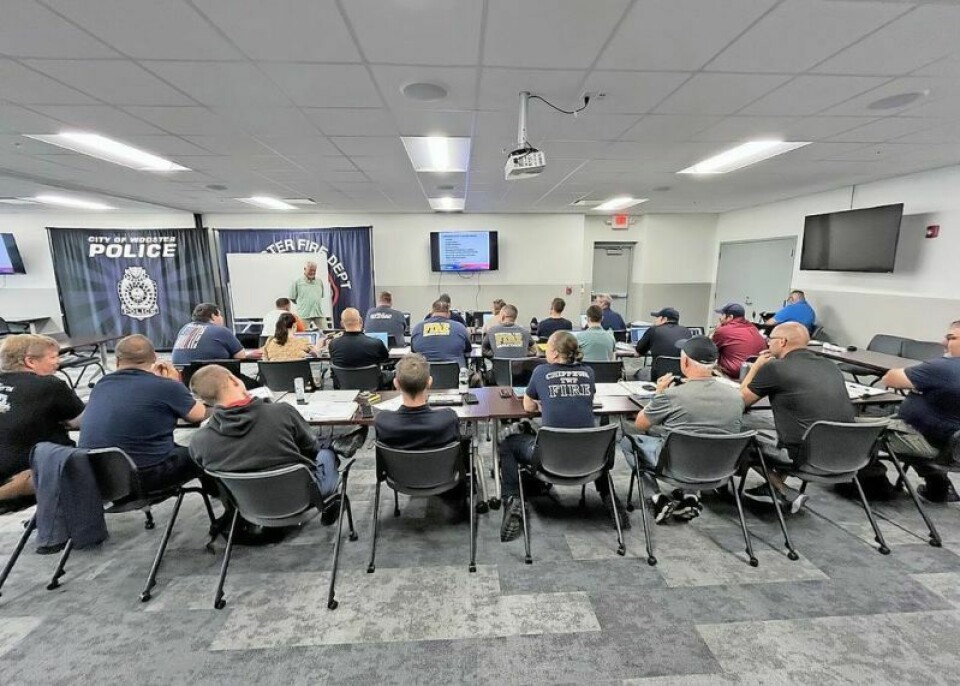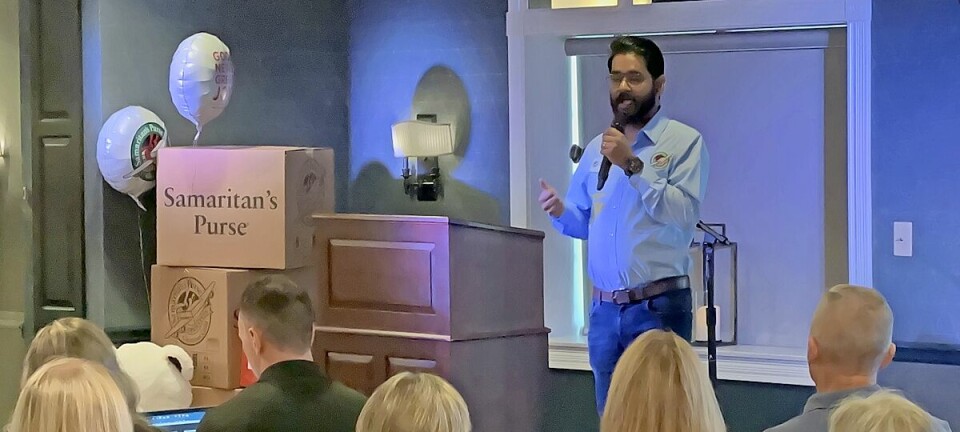First responders prepare for worst-case scenario with ICS

Integrating innovative tools such as drones, artificial intelligence and real-time data analytics promises to revolutionize how first responders operate. However, one tried and true concept from the 1970s is still in use: the Incident Command System.
By adopting the principles and structure of the ICS, responders can effectively coordinate their efforts, streamline communication and allocate resources more strategically, ultimately leading to better outcomes in crisis situations. The Wayne County Emergency Management Agency hosted the recent three-day ICS class at the Wooster Safety Center.
“The ICS concept keeps everyone on the same page,” County Emergency Management Agency Director Barb Pittard said. “This is not something that is determined at the time of an emergency; this is how first responders approach every crisis, whether it is a local fire or something as big as 9/11.”
The ICS is a standardized, on-scene, all-hazards incident management approach embraced by emergency responders worldwide.
Developed in response to wildfires in California, ICS provides a flexible framework for managing incidents of any size or complexity, from minor local emergencies to large-scale disasters.
ICS is designed to improve coordination among various agencies and organizations, enabling them to work together seamlessly. ICS establishes a clear chain of command and defines specific roles and responsibilities. This approach ensures all responders — whether firefighters, police officers, medical personnel or volunteers — are on the same page, facilitating swift decision-making and effective resource allocation.
During an emergency, different agencies such as police, fire and EMS may be on the scene, and depending on the location of the incident, they could be from various jurisdictions. For example, a large-scale incident in Mt. Eaton could receive aid from Stark, Holmes and Wayne counties.
From a first responder perspective, there is never any doubt about their role. Once the incident commander establishes a chain of command, resources are managed, and priorities are developed.
“You don’t want every resource diverted to the emergency,” Pittard said. “ICS helps with these types of logistics. Some resources must remain free to respond to the normal day-to-day events and emergencies.”
Another quality of the ICS model is that it is scalable. Pittard used the East Palestine train derailment scenario as an example of how a local incident can evolve into a state or federal incident.
“I have heard so many talks about the (East Palestine) incident,” she said. “When you have a large incident like that, state and federal entities start getting involved. We are a home-rule state, so everything begins locally. However, when an incident exceeds our ability to respond locally, that is when the larger agencies get involved.”
Dan Starcher is the public communications coordinator for Wayne County.
























